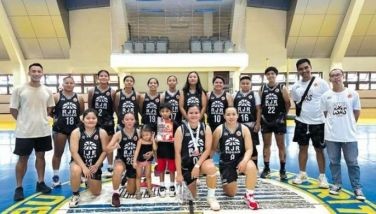The making of the SONA

SONA fever is in the air. The anticipation for the second State of the Nation Address is unprecedented. Special coverage TV programs have begun a SONA-watch, interviewing their viewers on what they expect/hope to hear from the President. Presumably, this has rating potential. The newspapers are guessing content. There was even an article by a group called Movement for Good Governance giving a low score for the President and suggesting areas to address. It ends with an impassioned admonition not to criticize former PGMA. So we know who’s behind the group. The supporters, critics and engaged citizens are eagerly waiting. As of this writing, the advanced copy of the speech has not yet been uploaded in www.gov.ph, the official Palace Gazette.
History has shown how noble rhetoric can become the hallmark of distinguished men in celebrated eras. Martin Luther King’s I have a dream, John F. Kennedy’s Inaugural Address, Pericles’ Funeral Oration, Abraham Lincoln’s Gettysburg Address, Nelson Mandela’s I am the first Accused, Winston Churchill’s We Shall Fight on the Beaches to name a few. Indeed the greatest speeches have shaped destiny, defined epochs, won wars and thawed icy hearts.
The SONA however, will require more than oratory and expression. It is first and foremost a report on what has been accomplished, and what is required to move forward for the realization of a clearly-defined vision. In advertising parlance, it is a major, major presentation, the equivalent of a new business pitch. What is excluded is just as important as what is included. It must contain what is salient, but leave room for the imagination. It must satisfy the intellect but feed the spirit. It must visualize the forest but focus on some trees. It must have clarity with brevity, cogency with empathy, sense with sentiment. It must be appreciated by the intelligentsia, but not sail over the heads of the common folks. It is not a walk in the park.
Most professional communications agencies follow a simple structure for coherent presentations. It answers five basic questions: 1) Where Are We? 2) Why Are We There? 3) Where do we want to be? 4) How do we get there? 5) Are we getting there? The strategic approach is electrified by catchy branding such as “Shift” or “Intrusion” but the content covers the same matter and follows essentially a similar format.
If the SONA were composed along these guidelines, it would have to begin with a truthful assessment of where the country is presently from the time that President Aquino set foot in Malacañang Palace. That necessarily entails an environmental scan of four major factors: the condition of the government as PNoy found it; the circumstances of its constituents; How the Philippines fared out versus other countries or global competitiveness; and how Brand Philippines is perceived by the different publics. To answer this question requires a back-story and objective research. Past Pulse and SWS surveys and international studies are the best sources for this evaluation. There is no way that the past administration can hide. GMA apologists and factotums are expected to raise a howl and protest their inclusion in the SONA.
The next question explains why we are where we are. Again, this will be a direct hit for the past administration but it should also include a SWOT analysis for President Aquino’s one-year residence. What are the strengths of Team PNoy? What are its weaknesses? Or as some may ask, who are the weakest links? Here, constructive criticism must be taken into account. A mea culpa on some errors can be refreshing. Are there structural and organizational defects that need to be changed? Does the President have the best and the brightest on board? This is not to suggest that individuals should be mentioned. Performance is the best and most objective indicator for this.
Opportunity is on the side of PNoy’s government. On Year One alone, the World Bank has cited economic gains and self-rated poverty and hunger indexes have gone down. Credit upgrade and investor confidence is on the upswing. Most significantly, the brand perception of being one of the most corrupt countries in the world is being erased, slowly but surely. The threats are always there, both natural and man-made. Recognizing and preparing for these hazards minimize negative impact.
The third question is where do we want to be or the Vision of PNoy? The objective as stated is to transform the culture of impunity to one that walks the straight path to progress. As lofty and ethereal as this objective maybe, it is measurable through share of minds and hearts. If most Filipinos believe this can happen and do their share, it becomes a viable vision.
Even in the real complan, how-do-we-get-there takes center stage. The SONA is an appropriate venue for a plan of action that will attain the desired future. But this is also where the danger of boring the audience to tears can happen. For every statistic, policy and jargon uttered, there must be a compensating human interest angle, a narrative that will keep the audience from straying or snoring.
Unlike other speeches that begin and end with words, the SONA is a living discourse with continuing value [at least until the next one]. Are-we-getting-there should be a recurrent concern. PNoy’s campaign promise, kung walang corrupt, walang mahirap, remains the essence of his government. In his Inaugural Address two lines resonated with the people: The symbolic Wala ng wang-wang and Kayo ang boss ko. Through ongoing dialogue with his constituents, he must communicate any dent made in reducing corruption and poverty, while espousing the trans-formation from a wang-wang society that coddles the privileged, to a truly just way of life where the greater good prevails.
The state of the nation is also the state of the citizens. Listening to the SONA is just a good beginning, but doing our part in nation-building is what really counts.
* * *
E-mail [email protected]
- Latest
- Trending

























